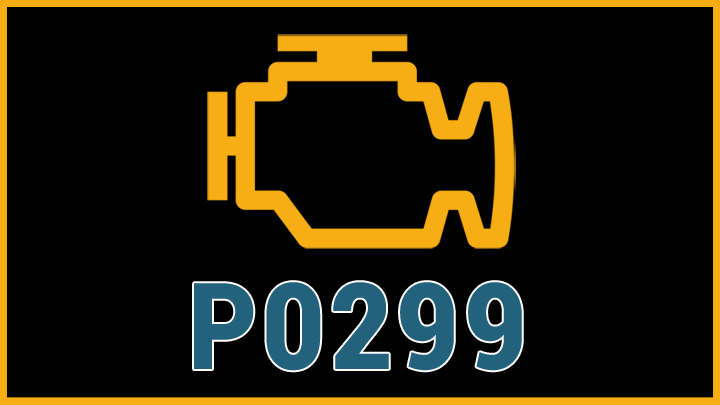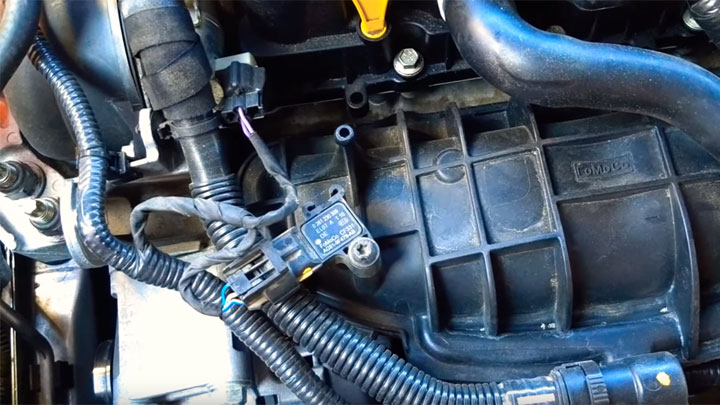P0299 Code (Symptoms, Causes, and How to Fix)
While you’re bound to have a little stress whenever your check engine light pops on, when that same light accompanies an engine that isn’t performing as it should, it can induce a full-on panic attack.
That’s precisely what happens when your engine has a P0299 code. But just because you’re noticing a lot of things going on doesn’t mean that you need a new engine.
Let’s look at what a P0299 code relates to, what causes it, and most importantly, how to fix it.

What Does Code P0299 Mean?
Underboost is a fancy term for your turbo or supercharger not performing as it should. More specifically, it’s not producing enough boost when the PCM tells it to, or at least the PCM doesn’t think it is.
The process starts when the PCM sends a signal to the turbocharger or supercharger to produce a specific amount of boost. The component does its best to oblige, and another sensor measures the performance and reports the actual boost achieved to the PCM.
If those readings indicate that the turbocharger or supercharger isn’t producing the requested boost, then a P0299 is the result in your forced induction vehicle.
Related: P0234 Code
Symptoms of Code P0299

Outside of the obvious check engine light, the most likely thing you’ll notice is a decrease in engine performance.
A P0299 turns on when your turbo isn’t producing enough boost, so it’s no surprise that performance will suffer, especially when you’re trying to achieve peak power.
Furthermore, you might notice that you’re burning through fuel a little quicker than usual, but that’s just because you have to hit the throttle a bit harder to get the results you’re used to.
- Decreased engine performance
- Lack of boost from the super/turbocharger
- Increased fuel consumption (due to a lack of performance)
Causes of Code P0299

While the end result of a P0299 is pretty straightforward, you can get there in tons of different ways. This makes it a pain to troubleshoot because you can’t just look at one spot to figure out what’s going on.
For starters, there are a litany of different sensors that can fail and cause a P0299 code. The MAP sensor, brake booster pressure sensor, and the turbo/supercharger solenoid are all common causes.
Furthermore, wiring issues, a failing PCM, or a faulty turbo/supercharger can also cause this code to pop. Finally, exhaust leaks are a common reason that your turbocharger might not get the boost that it needs.
While there might be a lot of causes for a code P0299, we’ll walk you through how to narrow it down in the sections below.
- Exhaust leak
- Manifold Absolute Pressure (MAP) sensor failure
- Brake booster pressure sensor failure
- Turbo/supercharger solenoid failure
- Wiring issue
- Turbo/supercharger failure
- Powertrain Control Module (PCM) failure
Is Code P0299 Serious?
Anytime your engine isn’t getting the performance that it’s expecting, you have a serious problem. It’s more than not getting enough power when you slam on the gas.
Because your engine is expecting all that power, the timing adjusts to it. When the power doesn’t get there, you get a mistimed engine, leading to further damages.
You might get lucky and have a faulty sensor even though the super/turbocharger is working correctly, but it’s just not worth the risk.
While a P0299 code won’t blow up your engine overnight, it will lead to more significant problems if you ignore it for a while.
See Also: Preventing LSPI in Turbocharged Vehicles
How to Fix
While there are tons of ways a P0299 code can appear, there are a few different things you can do to narrow down the problem. First, check to see if there is actually a decrease in performance.
If there isn’t, the problem might be with the sensor reporting back to the PCM. That component is the brake booster pressure sensor failure.
However, if you notice a lack of power, you can move onto some of the other likely culprits. Continue troubleshooting by hitting the throttle and listen. You’re listening for a hissing or rattling noise. If you hear it, you have an exhaust leak that might be causing your problem.
Once you’ve ruled those two problems out, the troubleshooting gets a bit more complicated. That’s because you’ll need to start checking components individually. The MAP sensor is the next most likely culprit, but this will often have a secondary check engine light pointing you to the sensor.
From there, you’ll need to check the turbo or supercharger. There are tons of things to check, but you mainly need to make sure that everything is sealed up and still spins the way it should.
Finally, check for wiring issues. If you know how to troubleshoot electrical problems, you’re in luck. If you don’t, you might want to take it to a mechanic.
There is an outside chance the PCM might be the problem, but you should only consider this if you’ve already ruled everything else out. A PCM rarely fails, making it unlikely that this is your problem.
- P0521 Code (Symptoms, Causes, How to Fix) - Mar 22, 2024
- How to PROPERLY Clean 5 Types of Steering Wheel Materials - Feb 19, 2024
- What Should You Do If Your Check Engine Light Comes On? - Nov 6, 2023

Hi a have a 2014 Hyundai santefe with drastically reduced engine performance no ses light but do have p0299 fault code no exhaust leaks and no leaks in charge tubes or intake . I haven’t pulled charge pipe to check impellers yet but I cannot physically move the rod from the actuator to the waste gate/valve . I didn’t notice anything above about waste gate is there a chance that it is stuck or obstructed ?
I don’t know. It’s possible you have a massive boost leak somewhere. There may be little vacuum lines that are connected to other parts of the turbo system that are harder to see. You could try a smoke test to see if that reveals any leaks. Check fuel trims with a scan tool to see if that gives you any more clues. I’m not real familiar with that particular system so it’s hard to give more specific advice.